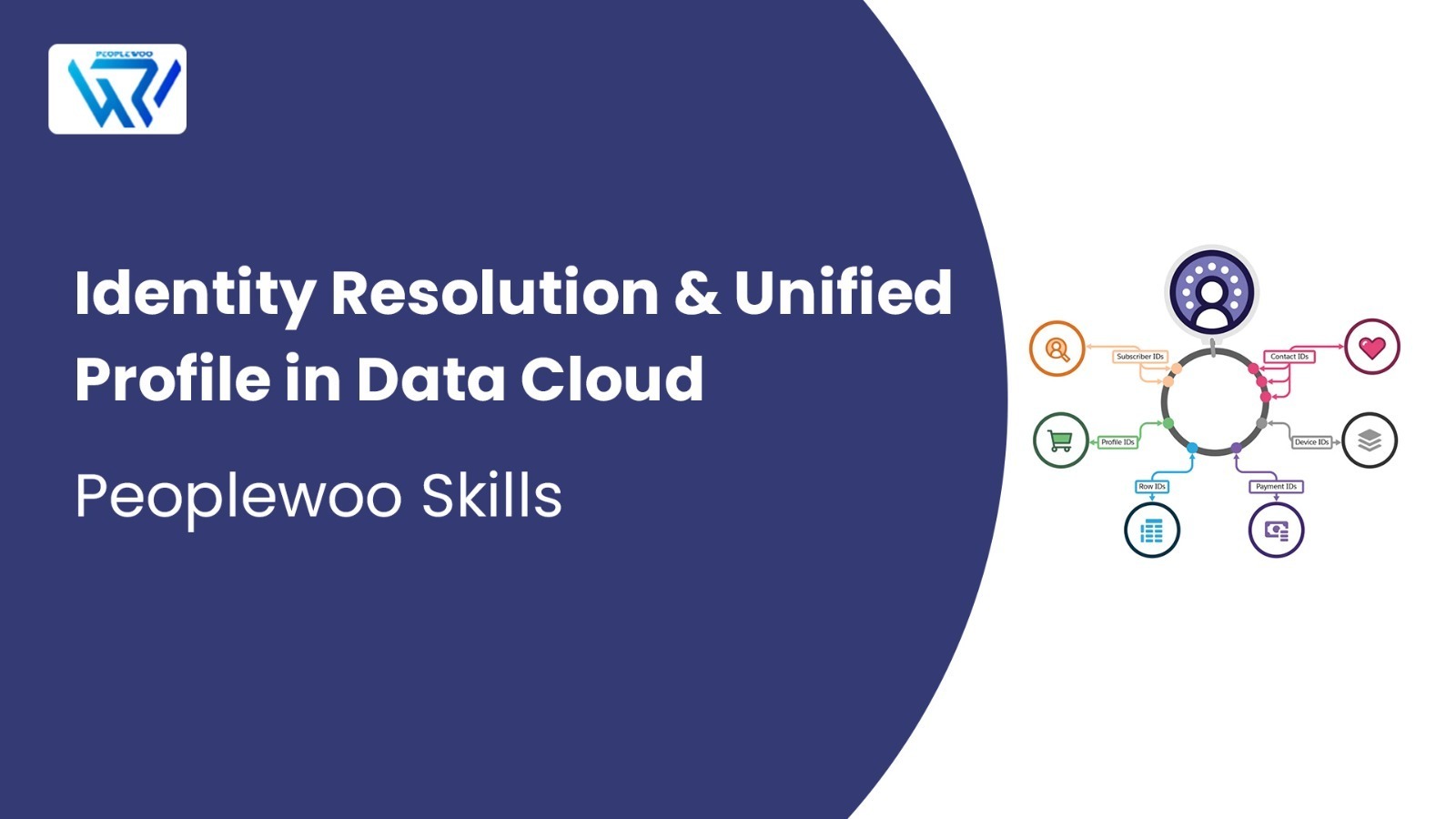
Salesforce Data Cloud helps organizations break data silos by connecting scattered customer data into a single, unified customer profile. The engine behind this magic is Identity Resolution — the process of intelligently matching customer records from different sources using an identity graph.
What Is Identity Resolution?
Identity Resolution is the process of identifying and linking records that refer to the same individual across different channels, devices, and systems — even when those records have different identifiers.
Example: A customer signs up with an email on a website, uses a phone number in a mobile app, and interacts via social media. Identity resolution helps tie all those touchpoints into a single identity.
What Is a Unified Profile?
A Unified Profile in Data Cloud is the 360-degree view of the customer. It combines attributes, behaviors, transactions, and identities into one central, AI-ready object that marketing, service, and analytics teams can use in real-time.
Watch Our Full Tutorial Video
Best Practices for Identity Resolution
- Use Contact Point (email, phone) + CRM ID for high match accuracy
- Avoid over-matching with too broad rules
- Use sandbox testing to validate merge logic
- Keep PII fields secure and anonymized when needed
- Monitor unified profile metrics regularly
Core Components of the Individual DMO
| Component | Description |
|---|---|
| Customer Key | A unique identifier for each individual in Data Cloud. |
| Profile Attributes | Key fields such as name, age, and email linked to the customer. |
| Behavioral Data | Logs of interactions like clicks, purchases, and site visits. |
| Profile Extensions | Custom objects linked to individual profiles (e.g., preferences or loyalty data). |
| Identity Resolution | Merging profiles across channels through matching strategies. |
Why the Customer Key Matters
The Customer Key ensures that every customer is represented by a single, unified profile across all data sources. This is essential for:
- Accurate personalization and targeting
- Unified opt-in and consent management
- Reliable analytics and engagement measurement
How Individual DMO Powers Real-Time Actions
In real-time use cases, Salesforce Data Cloud continuously updates the Individual DMO to reflect new events and attributes:
- New data is ingested and mapped to each customer’s DMO.
- Segmentation rules update attributes and extensions dynamically.
- Connected systems like Marketing Cloud or Personalization Studio immediately use these updates for targeting and content delivery.
DMO vs Traditional Contact Models
| Feature | Traditional Models | Individual DMO |
|---|---|---|
| Profile Scope | Channel-specific (email, mobile, CRM) | Holistic, cross-channel |
| Data Updates | Batch-based | Real-time streaming |
| Identity Stitching | Manual or third-party | Built-in via identity resolution |
| Activation | Limited to specific systems | Available across Marketing Cloud, Personalization, and CDP |
Start Your Salesforce Data Cloud Career Today
Join hundreds of successful learners at Peoplewoo Skills and build a rewarding career in Data Cloud, marketing automation, and CRM consulting.
Why Learn Data Cloud with Peoplewoo Skills?
- Live, instructor-led training with real-time practice
- Hands-on experience with Salesforce Data Cloud projects
- Access to sandbox orgs and datasets
- Free demo and career support
- Preparation for Salesforce certification
Best Practices for Implementing Individual DMO
- Define a consistent Customer Key across all connected systems.
- Map essential profile and behavioral attributes correctly within the Data Cloud schema.
- Set up identity resolution rules to merge known and anonymous profiles.
- Use real-time activation to deliver personalized content across channels.
- Monitor data quality and resolve mismatches regularly.
🚀 Deepen Your DMO Skills with Peoplewoo Skills
Frequently Asked Questions (FAQ)
Conclusion
The Individual Data Model Object forms the foundation of identity unification and real-time personalization in Salesforce Data Cloud. By maintaining a single source of truth through consistent Customer Keys and robust mapping, businesses can deliver powerful, connected experiences across all touchpoints. Mastering the Individual DMO unlocks the full potential of Salesforce’s data-driven marketing ecosystem.
More SFDC Resources
Start your SFMC journey today — join our Live Training or learn at your own pace with our Udemy Course.
Need help? Chat with us on WhatsApp anytime.
Learn. Practice. Get Certified. Succeed with Peoplewoo Skills.

